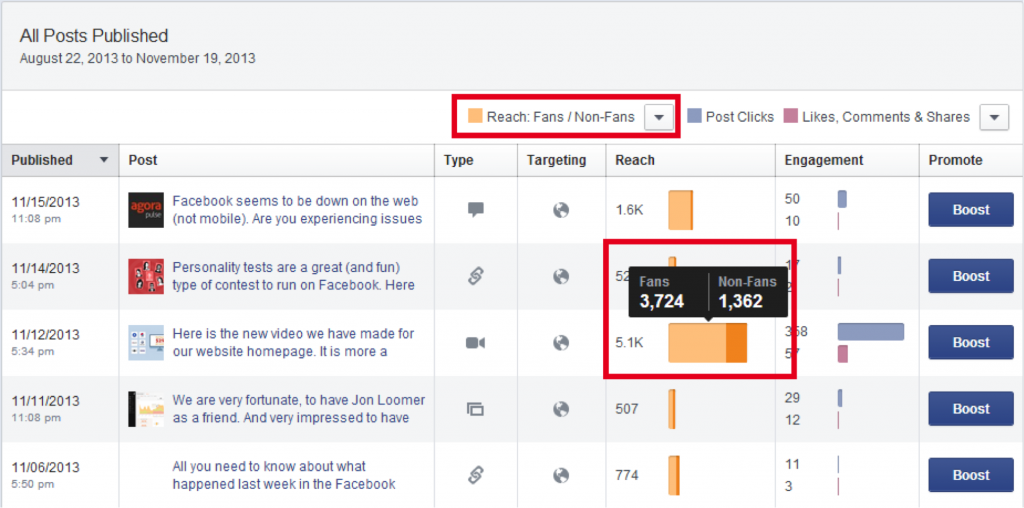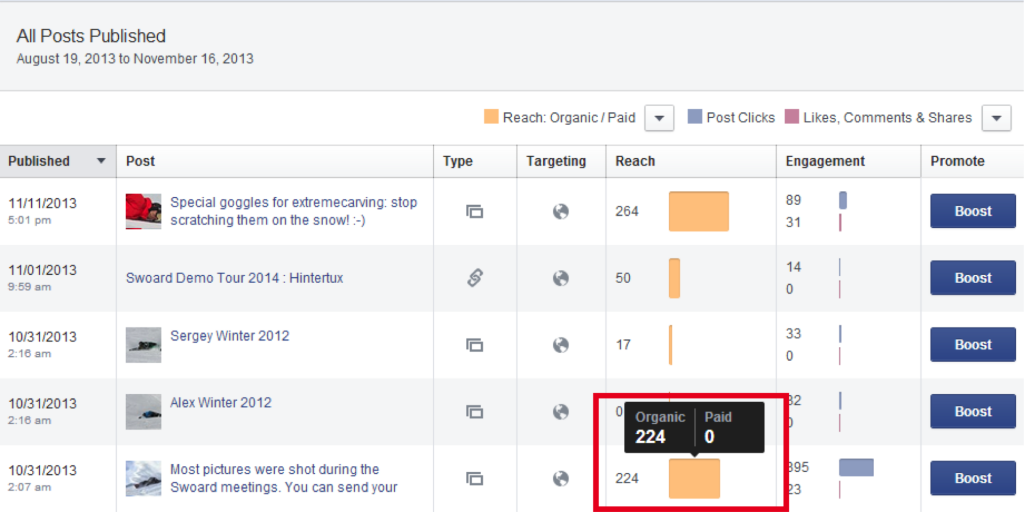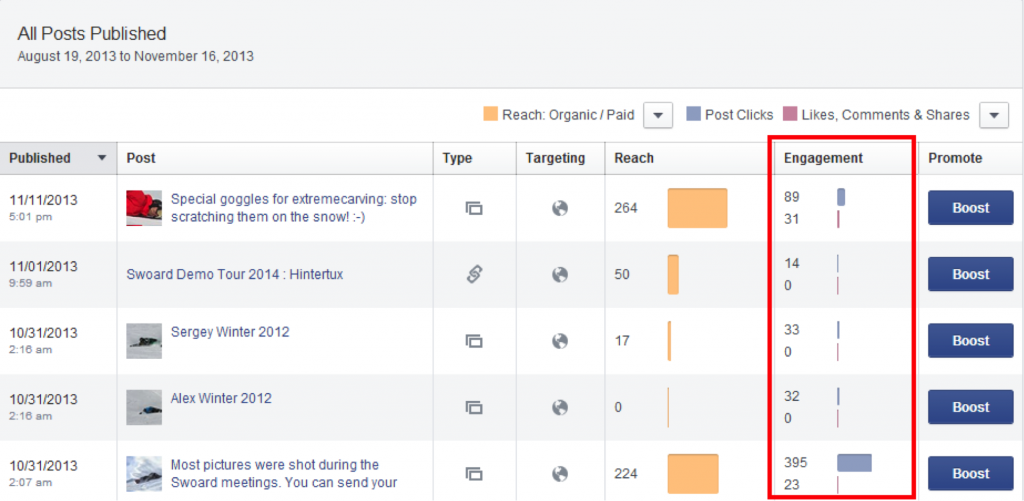You’ve created quality Facebook content, but now what? How do you measure the performance of your Facebook Page? With so many metrics to track, it can be hard to break through the clutter. To determine the metrics that really matter, why, and what they can teach you, we spoke with Emeric Ernoult, CEO of Facebook marketing firm, AgoraPulse, for his insight on the subject.
What he’s uncovered are the 6 key metrics you need to follow to really understand how your Facebook page is doing, where to find them, and what they mean for your Facebook performance and why you should care. In Part 1 of this blog installment, we’ll cover the first 3 of the top 6 Facebook Page statistics you need to know. Like what you see here and interested in learning more? Join OMI and Agorapulse for a free webinar, “Facebook Metrics: Measuring Your Content’s Performance”, next Thursday, June 12th at 11:00 am ET.
Facebook Page Statistic #1: Fan Reach
What is it?
Fan Reach = the number of fans of your page who have seen any given post.
Where can I find it?
The Fan Reach metric is now available in the Facebook statistics interface. The “Fans reached” metric is easy to spot in your Facebook insights. In the posts menu, click on the top left arrow and select “reach: Fans / Non-Fans”. Then, hover to each graph and you’ll see the number of fans reached for the concerned post.
Why does it matter?
The Per-post-Fan-Reach is the most important metric because it is a key indicator of your content’s appeal to your audience and the quality of your audience. The higher the quality of your audience and the more interesting your content is, the greater the increase in percentage of fans reached will be — and vice versa.
Facebook Page Statistic #2: Organic Reach
What is it?
Organic Reach = the number of people, fans and non-fans, who have seen a given post.
Where can I find it?
From your Facebook Page, go to your insights, click on “posts”, scroll down and you’ll see the “reach” number for each post. Hover your mouse on the bar chart for “organic” and you’ll see the Organic reach number for that post.
Why does it matter?
Organic Reach can replace fan reach in the metrics you are interested in, but only if the average difference between organic and fan reach is not too high in your case.
Otherwise, it can help you identify ways to improve your content’s organic visibility. For example, an organic reach that is very close to a fan reach typically means that someone cannot be exposed to your content if he or she is not already a fan. If you have a website, a blog and a newsletter and no or very little difference between your organic and fan reach, it probably means that you are not attracting a new “non fan” audience to your content. If that’s the case, try to better promote your page on these other channels and you should see your organic reach going up.
Facebook Page Statistic #3: Engagement
What is it?
Engagement = the number of people who clicked anywhere in your post. That means liking, commenting and sharing, but also people who’ve viewed your videos, clicked on your links and photos, and also, clicked on a commenter’s name, liked a comment, clicked on your page name and even those who gave negative feedback by reporting your post.
Reach tells you how many people have potentially seen your content, whereas engagement is the number of people who have acted on that content.
Where can I find it?
Go to your Insights at the same place where you spotted the organic reach. The number of people who “engaged” with your content is in the “Engagement” column. To see the total engagement though, you’ll have to add the number of post clicks and the number of likes, comments and shares.
Why does it matter?
Engagement, whether it implies “acting” on your post by commenting, liking or sharing it, or is “passive” such as watching the video, zooming on a photo or clicking on a link, is probably the second most important metric to focus on if you are serious about measuring your page’s performance.
It is not enough to be viewed by a lot of people, you need to make sure that what you offer them as content will trigger some kind of interest. And engagement is the only measurable sign of interest. Stay tuned for the next installment of this series, 6 Facebook Page Statistics You Need to Know, Part 2.


